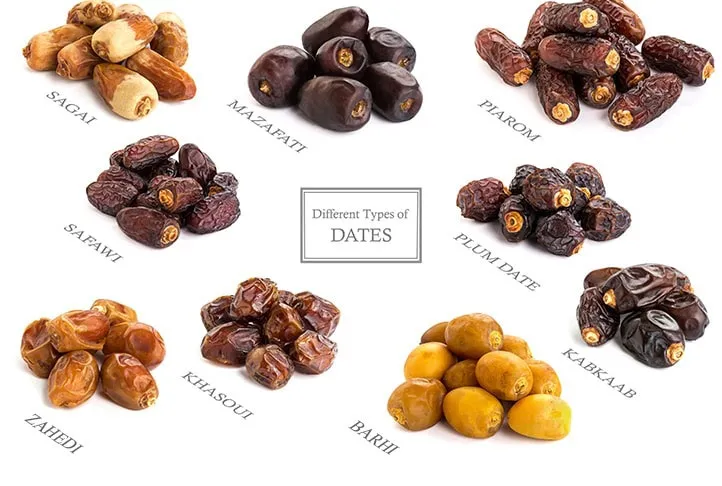Dates are not just a sweet delicacy — they are a vital part of traditional culture, a powerful energy source, and a highly profitable commodity on the international market. Iran, as one of the world’s oldest producers of dates, enjoys ideal climatic and agricultural conditions to offer some of the best varieties globally. With over 2,000 years of cultivation history, Iran is now among the top three exporters of dates worldwide.
Advantages of Iranian Dates
- High quality: grown without GMOs and with minimal chemical usage.
- Organic origin: many farmers use traditional methods without synthetic fertilizers.
- Competitive pricing: despite the high quality, Iranian dates remain cheaper than UAE or Tunisian alternatives.
- Variety of types: from soft dates for fresh consumption to dry types suitable for long storage.
- Ideal climate: hot sun, low humidity, and sandy soils.
- Stable crop volumes: enables long-term export contracts.
- Excellent transport durability: especially for semi-dry and dry varieties.
Geography and Export Potential
Iran exports more than 300,000 tons of dates annually to over 70 countries. Key markets include:
- India: the largest importer of dates, especially Zahedi and Sayer varieties.
- European Union: strong interest in organic varieties (Piarom, Mazafati).
- China: emerging market with demand for premium packaging.
- Russia and CIS: consistent demand for semi-dry types for bulk wholesale.
Where the Best Iranian Dates Grow
| Region | Features |
| Bam (Kerman) | Mazafati — soft dates, require refrigeration |
| Khuzestan | Sayer (Estameran) — semi-dry, versatile for export |
| Fars | Kabkab and Zahedi — bulk shipments, long shelf life |
| Sistan and Baluchestan | Dry dates, suitable for storage and later packaging |
| Hormozgan | Early-ripening varieties, proximity to Bandar Abbas port |
Main Varieties and Transport Notes

| Variety | Type | Moisture | Storage & Logistics Requirements |
| Mazafati | Soft | 20–35% | Cold chain only (+4°C), reefer container |
| Sayer | Semi-dry | 15–18% | Transport-stable, store at +15–25°C |
| Zahedi | Dry | <14% | Long shelf life (12–18 months) |
| Kabkab | Semi-dry | 18–20% | Ventilated containers required |
| Piarom | Dry | <15% | Very sweet and dense, for premium markets |
| Barhi | Fresh | 35–40% | Requires fast delivery and storage at +4°C |
| Khasoui | Soft | 20–30% | Exotic taste, popular in Arab countries |
| Sagai | Semi-soft | ~20% | Popular in Arab markets, fleshy with honey texture |
| Safawi | Dry | <15% | Dark, sweet, rich taste; also grown in Saudi Arabia |
| Plum Date* | Soft | — | Marketing name; possible equivalents: Shahani, Kalooteh |
*Plum Date is an informal marketing name used by some suppliers. It often refers to dark-colored soft dates with rich texture.
Seasonality: When to Source Dates
- Harvest season: mid-August to late October
- Main shipping period: September to December
- Best time to buy: September–November for soft types; year-round for dry types
Recommendation: If sourcing Mazafati, Barhi, or Sagai, order early. These varieties have a short season and require special logistics.
Packaging Forms & Export Standards
| Packaging Type | Volume | Use Case | Standards |
| Carton boxes | 5kg, 10kg | Wholesale, processing, storage | HACCP, ISO, export stamp |
| Vacuum/plastic packs | 500g – 1kg | Retail, e-commerce, private label | Often with custom labeling |
| Bulk (sacks or crates) | 20–25kg | Industrial use, repackaging | Unmarked, economical option |
Note: For international retail chains, it’s best to use packaging compliant with EU or GCC standards (e.g., Arabic labeling).
Logistics Routes & Export Hubs
- Bandar Abbas Port: key sea hub for India, UAE, and China
- Shahr-e-Rey & Tehran: air freight hubs for soft date varieties
How to Start Importing
Successful date imports from Iran require a clear understanding of seasonality, varieties, logistics, and packaging. We recommend:
- Select the variety that fits your market (e.g., Mazafati for EU premium shops, Sayer for CIS bulk).
- Request pricing and samples 1–2 months ahead of harvest.
- Verify export certificates and shelf life.
- Discuss packaging (bulk or retail), labeling, and languages.
- Confirm logistics arrangements (especially for soft types).
Ready to Partner?
Want a fresh price list, product photos, or samples?
We offer direct access to verified suppliers, competitive pricing, and full support across the supply chain.
Contact us to start importing premium Iranian dates to your region — from Europe and CIS to the Middle East and beyond.